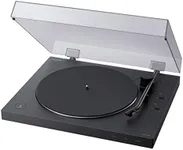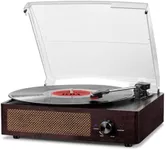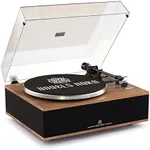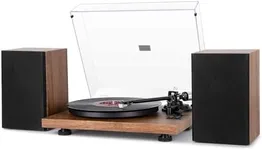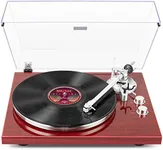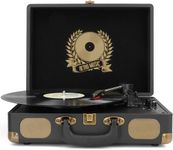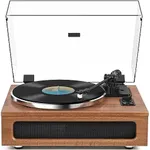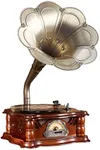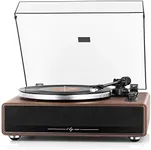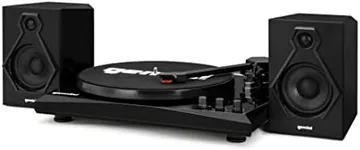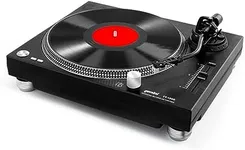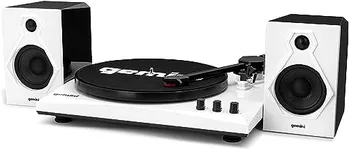Buying Guide for the Best Bluetooth Turntable
Choosing the right Bluetooth turntable can be a rewarding experience, especially if you love the warm sound of vinyl records but also want the convenience of wireless technology. When selecting a Bluetooth turntable, it's important to consider several key specifications to ensure you get the best fit for your needs. Understanding these specs will help you make an informed decision and enjoy your music to the fullest.Bluetooth VersionThe Bluetooth version of a turntable determines the quality and stability of the wireless connection. Newer versions, such as Bluetooth 5.0, offer better range, faster data transfer, and improved audio quality compared to older versions like Bluetooth 4.0. If you plan to use your turntable in a larger space or want the best possible sound quality, opt for a model with the latest Bluetooth version. For casual listening in a smaller area, an older version may suffice.
Cartridge TypeThe cartridge is the component that holds the needle (stylus) and reads the grooves on your records. There are two main types: moving magnet (MM) and moving coil (MC). MM cartridges are more common, easier to replace, and generally more affordable, making them a good choice for most users. MC cartridges, on the other hand, can offer superior sound quality but are typically more expensive and harder to replace. If you're an audiophile seeking the best sound, consider an MC cartridge; otherwise, an MM cartridge should meet your needs.
Drive TypeTurntables come with either a belt drive or a direct drive. Belt drive turntables use an elastic belt to spin the platter, which can help reduce motor noise and vibration, resulting in better sound quality. Direct drive turntables have the motor directly connected to the platter, offering more consistent speed and better torque, which is ideal for DJing. If you prioritize sound quality for home listening, a belt drive turntable is a good choice. If you plan to use the turntable for DJing or need quick start-up times, a direct drive model is preferable.
Built-in PreampA built-in preamp amplifies the signal from the turntable to a level that can be used by speakers or other audio equipment. Some turntables come with a built-in preamp, while others require an external one. If you want a simple, plug-and-play setup, look for a turntable with a built-in preamp. If you already have a high-quality external preamp or plan to upgrade your audio system in the future, a turntable without a built-in preamp might be a better option.
Speed SettingsTurntables typically offer different speed settings to accommodate various types of records. The most common speeds are 33 1/3 RPM (for LPs) and 45 RPM (for singles). Some turntables also support 78 RPM for older records. Make sure the turntable you choose supports the speeds you need. If you have a diverse record collection, look for a model that offers all three speed settings. If you primarily listen to modern LPs, a turntable with just 33 1/3 and 45 RPM settings should be sufficient.
Platter MaterialThe platter is the part of the turntable that the record sits on. Platter materials can affect sound quality and stability. Common materials include plastic, aluminum, and acrylic. Plastic platters are lightweight and affordable but may not provide the best sound quality. Aluminum platters offer better stability and sound quality, while acrylic platters are known for their excellent sound dampening properties. If you're looking for the best sound quality, consider a turntable with an aluminum or acrylic platter. For casual listening, a plastic platter may be adequate.
Tonearm TypeThe tonearm holds the cartridge and allows the needle to track the record's grooves. There are two main types: straight and S-shaped. Straight tonearms are simpler and often found on entry-level turntables, providing good performance for most users. S-shaped tonearms are designed to reduce tracking error and can offer better sound quality, making them a popular choice for audiophiles. If you're new to vinyl or looking for a straightforward setup, a straight tonearm should work well. If you're seeking higher fidelity, consider an S-shaped tonearm.
